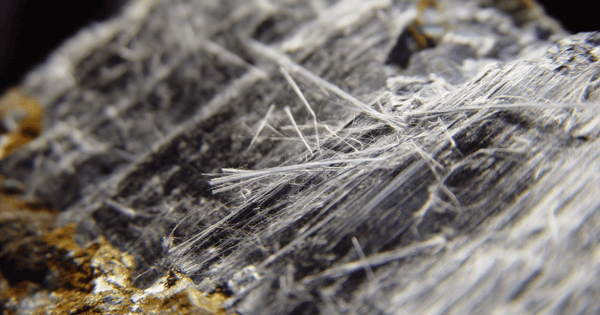Asbestos-Containing Materials
What are Asbestos-Containing Materials (ACMs)?
Asbestos has been historically used in all kinds of buildings and construction work throughout the best part of the 20th century. Even though the dangers of asbestos did become clearer in the early parts of the 20th century, it wasn’t until its effective ban, in 1999, when asbestos production completely stopped.
Asbestos-containing materials are simply materials that contain any type of asbestos. It’s important to understand that different types of asbestos exist. Blue and brown asbestos were banned in 1985, whereas white asbestos was banned in 1999.
Asbestos has been firmly linked with an array of different health problems, primarily when its fibres release into the air. From respiratory problems to lung cancer or other issues that can affect humans for up to 60 years, asbestos is one of the most harmful substances in the world today.
 Asbestos can be found in many materials, and businesses should be regularly auditing their workplaces to keep workers safe.
Asbestos can be found in many materials, and businesses should be regularly auditing their workplaces to keep workers safe.
The Health and Safety Executive (HSE) has very specific policies about asbestos-containing materials (ACMs):
- ACMs that aren’t releasing any dust into the surrounding environment and are in good condition shouldn’t be removed or even disturbed
- ACMs that are deteriorating and showing visible signs of damage, and ones that are releasing dust should be sealed or removed, whatever seems appropriate.
- ACMs require proper management and it’s important to check their condition periodically
- Organizations must establish a priority order on how remedial work should be conducted.
- It’s also important for companies to make use of substitute or alternate materials when possible.
Why is it Important to Take Remedial Steps for Asbestos-Containing Materials (ACMs)?
Asbestos isn’t harmful in its undisturbed state. However, when the fibres are disturbed and released into the air, they turn into a serious health hazard. When inhaled as a fine dust, these particles stick to the insides of a person’s lungs, and over time cause breathing difficulties.
These can eventually turn into lung cancer, and numerous studies have confirmed that the risk of disease is directly linked to the total exposure. Asbestos-containing materials were popular in the 20th century as they were fire-resistant and had excellent insulating properties.
However, as their health effects became apparent and they were phased out and eventually banned, buildings or plants already constructed using asbestos needed to be dealt with. In case the fibres were disturbed or released into the air, the ACMs need to be removed.
But, if there aren’t any cracks, then the best option is to just maintain them and keep proper checks. At the moment, it is believed that asbestos fibres are found in more than 4,000 products, spread over more than 15,000 patents.
Current estimates indicate that over half a million non-domestic properties, and more than 65% of all local buildings, have some type of asbestos-containing materials.
Companies that are housed in buildings which were built before the year 2000 are required to maintain an Asbestos Register and Management Plan. This is a detailed document that indicates the company’s identification of ACMs in the building, and how they have planned on dealing with its presence.
Both commercial and domestic buildings are required to conduct a demolition or refurbishment survey before they start work.
The Most Common Types of Asbestos-Containing Materials
Currently, there are many different types of ACMs found around the world. These include common materials like corrugated roofs to guttering, all the way to water tanks to soffit boards and even wall cladding. Here are some of the most common asbestos-containing materials that you should know about.
Asbestos Lagging
Lagging was commonly used to add insulation to pipes and boilers. It was even used as a floor underlay, and owing to the excellent insulative properties of asbestos, this became an excellent choice. Today, asbestos lagging is commonly found in both domestic and commercial properties.
Asbestos Sheets
Asbestos sheets were commonly used in partition walls or in ceiling tiles, mainly because of their excellent fire resistant properties.
Asbestos Coatings
A number of decorative coatings produced in the 20th century also contained asbestos sheets. These included radiator covers, toilet cisterns, or even items such as a ceiling artex. Artex finishes built prior to 1999 must always be checked because they contain ACMs.
How to Mitigate Asbestos Risk for Workers
Workers are generally at an elevated risk of exposure to asbestos fibres, mainly if they work in buildings that contain asbestos. As a result, it is important for organizations to take appropriate steps to spread awareness.
It is the employer’s responsibility to ensure that they provide proper PPE equipment to their employees so that they can deal with asbestos-containing materials, or at the very least, protect themselves.
More importantly, it’s also essential for workers to have proper awareness about asbestos and how it affects people. They should also receive training on how to spot cracks in asbestos surfaces and how to take remedial action.
Use EcoOnline’s Health & Safety Software to Mitigate the Risks of ACMs
EcoOnline’s Health & Safety Software is an excellent solution that’s designed for organizations that want to improve employee safety.
It not only features various modules that you can use to easily enhance its functionality, but it also allows companies to manage the risk of ACMs by providing a cloud-based solution that they can update quickly with new information.
